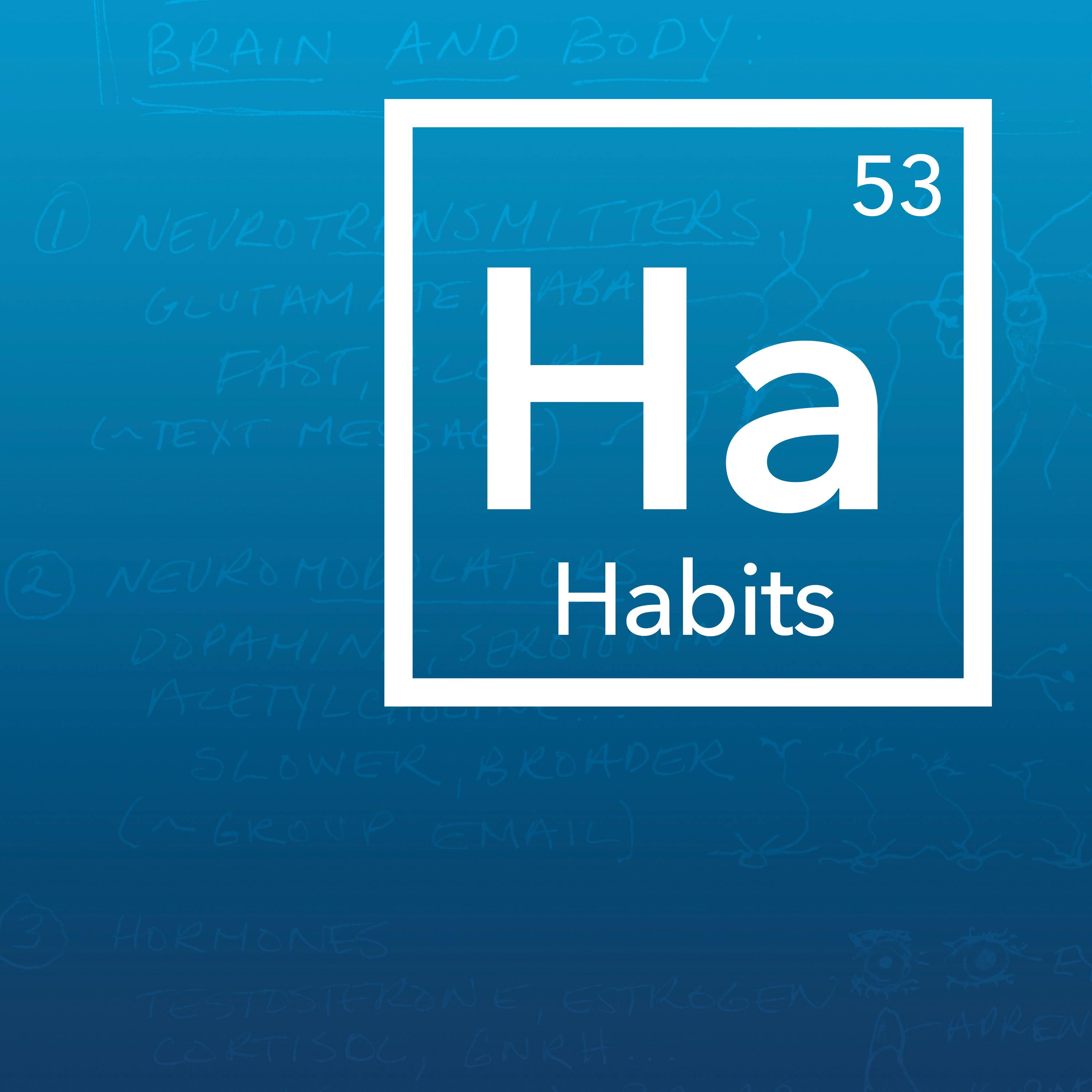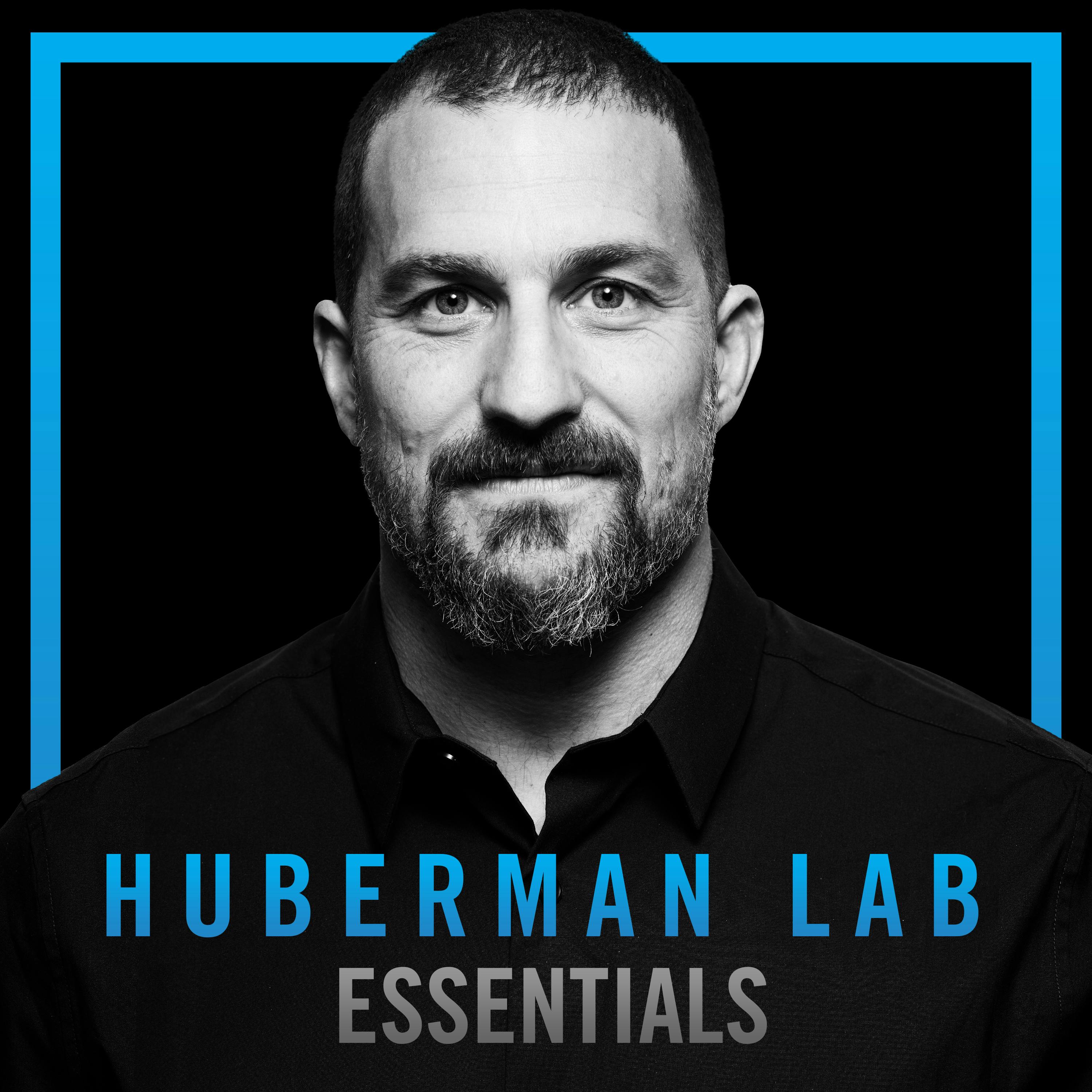
January 3, 2022 • 1hr 47min
The Science of Making & Breaking Habits
Huberman Lab

Key Takeaways
- Habits are learned behaviors that involve neuroplasticity and changes in neural connections. They make up about 70% of our waking behavior.
- Limbic friction refers to how much effort is required to overcome your current state and engage in a habit. Lower limbic friction makes habits easier to form and maintain.
- Task bracketing involves neural circuits that frame the events just before and after a habit, making it more likely to occur consistently.
- A 3-phase habit formation system leverages natural neurochemical states throughout the day:
- Phase 1 (0-8 hours after waking): High norepinephrine/dopamine, good for high friction habits
- Phase 2 (9-14 hours after waking): Rising serotonin, good for lower friction habits
- Phase 3 (16-24 hours after waking): Sleep, critical for habit consolidation
- A 21-day habit installation system involves:
- Attempting 6 new habits daily but only expecting to complete 4-5
- Chunking into 2-day units
- Testing habit reflexivity in the following 21 days
- To break bad habits, engage in a positive replacement behavior immediately after the unwanted habit occurs to disrupt the neural pattern.
Introduction
In this episode, Dr. Andrew Huberman discusses the neuroscience and psychology of habit formation and breaking. He explains the biological mechanisms underlying habits and provides two specific programs for developing new habits based on scientific research. The episode covers topics like neuroplasticity, limbic friction, task bracketing, and leveraging natural neurochemical states for optimal habit formation.
Topics Discussed
Habits and Neuroplasticity (6:52)
Habits are learned behaviors that involve neuroplasticity - changes in neural connections in response to experience. Unlike reflexes, habits are acquired through repetition and practice. Neuroplasticity involves forming new neural circuits that make certain behaviors more likely to occur.
- Habits make up about 70% of our waking behavior
- Learning involves changes in connections between neurons
- Neuroplasticity creates new neural pathways for habits
Goal-Based vs. Identity-Based Habits (8:51)
There are two main types of habits discussed in popular psychology:
- Goal-based habits: Focused on achieving a specific outcome each time (e.g. exercising for 60 minutes)
- Identity-based habits: Linked to a larger self-concept (e.g. being "a fit person")
How Long It Takes to Form a Habit (11:40)
Contrary to popular belief, there is no set timeframe for habit formation. Research shows it can take anywhere from 18 to 254 days to form a habit, depending on the individual and the specific habit.
- Study by Lally et al. (2010) found wide variation in habit formation time
- Concept of "limbic friction" - effort required to overcome current state and engage in habit
- Lower limbic friction makes habits easier to form and maintain
Linchpin Habits (16:07)
Certain habits act as "linchpins" that make other habits easier to execute. These are typically enjoyable activities that shift other behaviors in a positive direction.
- Example: Exercise as a linchpin habit that improves sleep, nutrition, etc.
- Linchpin habits are usually enjoyable and easy to execute
Habit Strength and Context Dependence (18:55)
Habit strength is measured by two main criteria:
- Context dependence: How likely the habit is performed in different environments
- Limbic friction: How much effort is required to perform the habit regularly
Automaticity (22:55)
The ultimate goal of habit formation is automaticity - when neural circuits can perform the habit automatically with minimal conscious effort.
Procedural Memory Visualizations (24:03)
A simple but powerful tool for habit formation:
- Mentally walk through the specific sequence of steps required to execute the habit
- This primes neural circuits and reduces limbic friction
- Can significantly increase likelihood of performing the habit
Task Bracketing (31:00)
Task bracketing involves neural circuits in the dorsolateral striatum that frame the events just before and after a habit execution. This makes the habit more likely to occur consistently.
- Dorsolateral striatum becomes active at start and end of habit
- Creates a neural "fingerprint" for the habit
- Makes habit more reflexive and context-independent over time
3-Phase Habit Formation System (37:08)
Dr. Huberman outlines a system for habit formation based on leveraging natural neurochemical states throughout the day:
Phase 1 (0-8 hours after waking) (38:16)
- High norepinephrine, dopamine, and cortisol
- Ideal for high limbic friction habits
- Supported by: sunlight exposure, exercise, cold exposure, caffeine, fasting
Phase 2 (9-14 hours after waking) (46:29)
- Rising serotonin, declining dopamine/cortisol
- Good for lower friction habits
- Supported by: limiting bright light, NSDR, heat exposure, relaxation
Phase 3 (16-24 hours after waking) (55:24)
- Sleep phase critical for habit consolidation
- Low light, cool temperature environment
- Supported by: proper nutrition, sleep supplements if needed
Dopamine and Reward Prediction Error (1:04:57)
Dopamine release and reward prediction error play a crucial role in habit formation:
- Dopamine is released when expected rewards arrive
- Larger dopamine release for unexpected rewards
- Dopamine drop below baseline if expected reward doesn't arrive
Dopamine Spotlighting (1:10:30)
A technique to leverage dopamine for habit formation:
- Positively anticipate the entire sequence of events around habit execution
- Associate dopamine release with broader time envelope, not just habit itself
- Increases motivation and likelihood of habit execution
21-Day Habit Installation System (1:18:22)
Dr. Huberman outlines a 21-day system for installing new habits:
- Set out to perform 6 new habits daily
- Only expect to complete 4-5 each day
- Chunk into 2-day units
- After 21 days, test how many habits have become automatic
- Use following 21 days to assess habit reflexivity before adding new ones
Breaking Bad Habits (1:28:26)
To break unwanted habits, leverage long-term depression in neural pathways:
- Engage in a positive replacement behavior immediately after the bad habit occurs
- This disrupts the neural pattern and makes the bad habit less automatic
- Creates a "cognitive mismatch" to intervene in closed habit loops
Ineffective Habit Breaking Techniques (1:35:49)
Research shows some common habit-breaking techniques are not very effective:
- Notifications and reminders lose effectiveness over time
- Self-imposed punishments are rarely severe enough
Positive Cargo Technique (1:37:50)
An effective method for breaking bad habits:
- Immediately after the unwanted habit, engage in a positive "replacement" behavior
- This creates a temporal mismatch in neural firing
- Makes it easier to recognize and intervene before the bad habit occurs
Conclusion
Dr. Huberman provides a comprehensive overview of the neuroscience and psychology behind habit formation and breaking. By understanding the biological mechanisms involved, we can leverage natural neurochemical states and proven techniques to more effectively build positive habits and break unwanted ones. The two main systems outlined - the 3-phase daily approach and the 21-day installation method - offer practical frameworks for applying these scientific insights to real-world habit change efforts.







